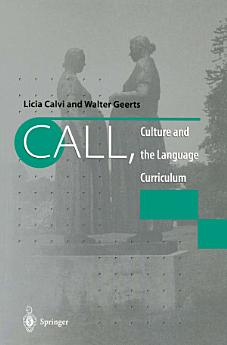CALL, Culture and the Language Curriculum
Licia Calvi · Walter Geerts
Dec 2012 · Springer Science & Business Media
Ebook
163
Pages
reportRatings and reviews aren’t verified Learn More
About this ebook
A consensus seems to exist on the following. In foreign language acquisition methodology sound methods and efficient tools have been developed until now in order to allow the learner to master and put into practice grammar, basic vocabulary and frequent communicative rules. Within this area Computer Assisted Language Learning (CALL) has become an indispensable partner, often leading the game. Beyond these borders, however, methodology as a whole becomes more blurred. Rules seem to vanish, variation and specialisation increase. Intuitive and ad hoc approaches seem to take the lead on formally established methods. The reasons for this are obvious: how to control the enormous, ever changing and expanding set of data, links and encyclopedic information that we associate with a richly developed human language? In front of this overwhelming opponent the search for method often surrenders. This is the point where CALL could offer foreign language learning the opportunity to make another jump forward. Information technology is capable of handling and streamlining huge and complex amounts of information. But this is also the point where language crosses the border of the purely linguistic fact, and where language learning has to come to terms with what we would call "cultural" issues.
Rate this ebook
Tell us what you think.
Reading information
Smartphones and tablets
Install the Google Play Books app for Android and iPad/iPhone. It syncs automatically with your account and allows you to read online or offline wherever you are.
Laptops and computers
You can listen to audiobooks purchased on Google Play using your computer's web browser.
eReaders and other devices
To read on e-ink devices like Kobo eReaders, you'll need to download a file and transfer it to your device. Follow the detailed Help Center instructions to transfer the files to supported eReaders.




